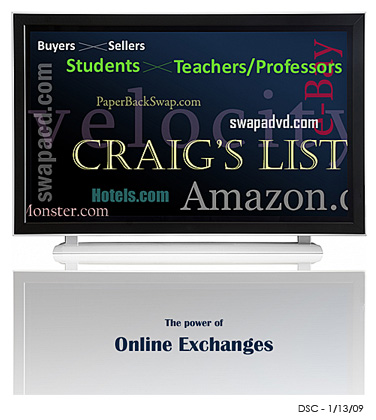UK university joins US online partnership — from bbc.co.uk by Sean Coughlan BBC News education correspondent

Daphne Koller, co-founder of Coursera, and Edinburgh University’s principal,
Sir Timothy O’Shea, sign up to the online partnership
UK university joins US online partnership — from bbc.co.uk by Sean Coughlan BBC News education correspondent

Governor Jerry Brown, Udacity announce pilot program for $150 classes — from edsurge.com by Kris Hattori
San Jose State University will offer students three online classes from Udacity
Also from Campus Technology re: the elements in a collaborative classroom:
The power of the business matchmaker — from management.fortune.cnn.com by John Hagel and John Seely Brown
Matchmakers can connect millions of people looking to pair talent with jobs, buyers with vendors, tenants with landlords, etc. The Fortune 500 should take note.
From DSC:
Makes me wonder how many MOOCs will morph into matchmakers…and I continue to wonder if the corporate world will develop/use their own MOOCs and use them as pre-screening/filtering mechanisms…
.

Massive List of MOOC Resources, Lit and Literati — from worldofwebcast.com by Erica St. Angel
UK universities forge open online courses alliance: FutureLearn Consortium will offer uni-branded MOOCs starting next year — techcrunch.com by Natasha Lomas
Excerpt:
Today’s [12/13/12] news means even more MOOCs will be offered next year, as 12 UK universities are getting together to form a new company that will offer the online courses — under the brand name of FutureLearn Ltd. The universities are: Birmingham, Bristol, Cardiff, East Anglia, Exeter, King’s College London, Lancaster, Leeds, Southampton, St Andrews and Warwick, along with UK distance-learning organization The Open University (OU).
Citing IT skills shortage, IBM wants to expand presence at universities — from wiredacademic.com
Excerpt (emphasis DSC):
“We want to be the scale up partner of choice for these universities,” said Jim Sporher, head of IBM’s university programs. “We want to make sure they have access to technology and understand our strategy.” He also sees massive open online courses (MOOCs) as a mega-trend and will be considering ways for IBM to be part of the MOOC trend in the future, particularly as many of the MOOC providers such as Udacity and Coursera offer classes in computer science.
…
As a big blue-chip progenitor of the tech industry, IBM is worth listening to in many regards. For one, corporate computing trends often filter down into the education space. The corporate world often has the money to purchase and deploy game-changing technologies. IBM sees that it also works the other way too, where computing at the university level creates new businesses and ideas that move up into the corporate realm.
.
From DSC:
I wonder…will the corporations develop their own MOOCs? Their own digital “playlists” and associated exams? (i.e. that someone needs to go through and pass in order to work for them…show me what you can do.) Hmmm…
Also see:
.
.
Also see:
Excerpt from edSurge’s 12-4-12 newsletter:
SO HOW WAS THAT MOOC FOR YA? First come the MOOCs, then come the reviews. First out of the box: Founded just six months ago, Knollop is a Yelp-like review and discovery site for MOOCs. It boasts courses from nine MOOCs: including Khan Academy, MIT, and Harvard, as well as favorites like edX, Udacity, and Coursera.
But Knollop has competition. A mere seven weeks ago, serial entrepreneur Jesse Spaulding (LunchTree, FourTonight) launched a rival site called CourseTalk. While CourseTalk features many of the same features as Knollop, it lists just 276 courses to Knollop’s 2,835.
.
.
Berklee College of Music gives MOOCs a soundtrack, draws 80,000 students — from onlinecollegecourses.com by Alex Wukman
Excerpt:
When Berklee College of Music’s massive open online courses (MOOCs) launch in January they will be the first attempts to bring music education to the world of MOOCs.